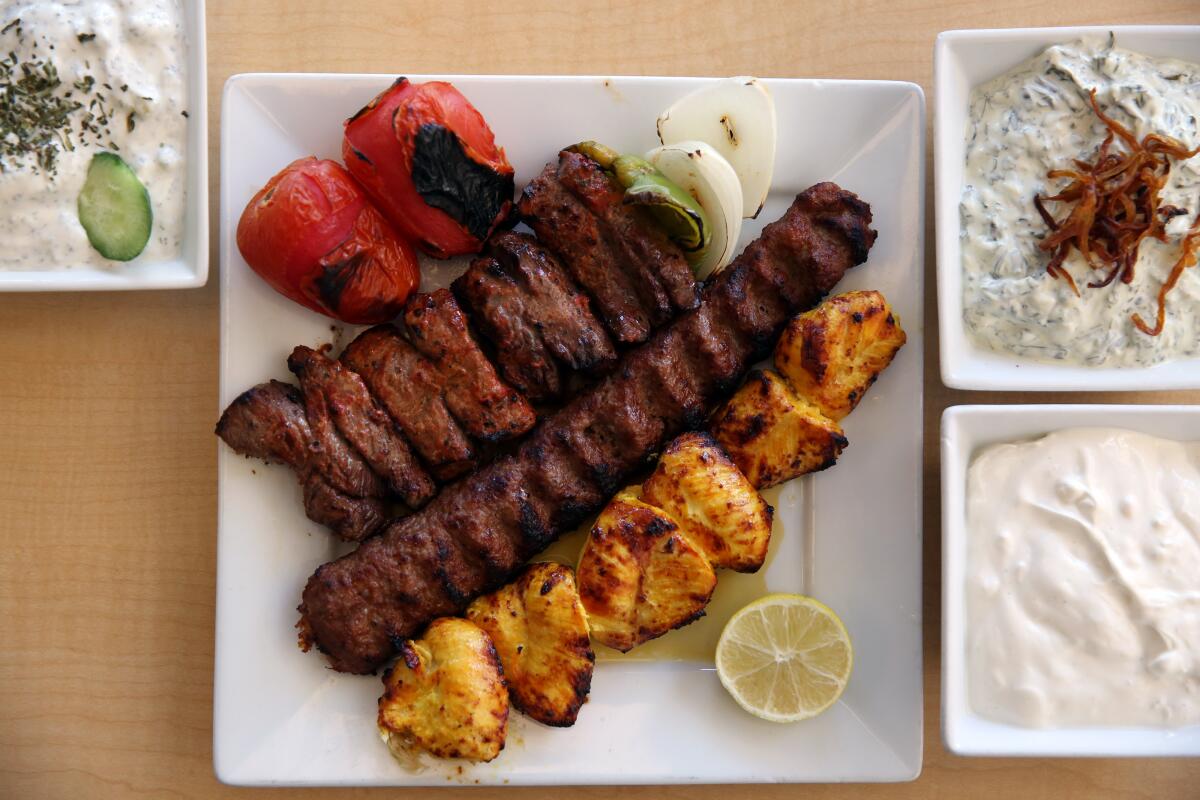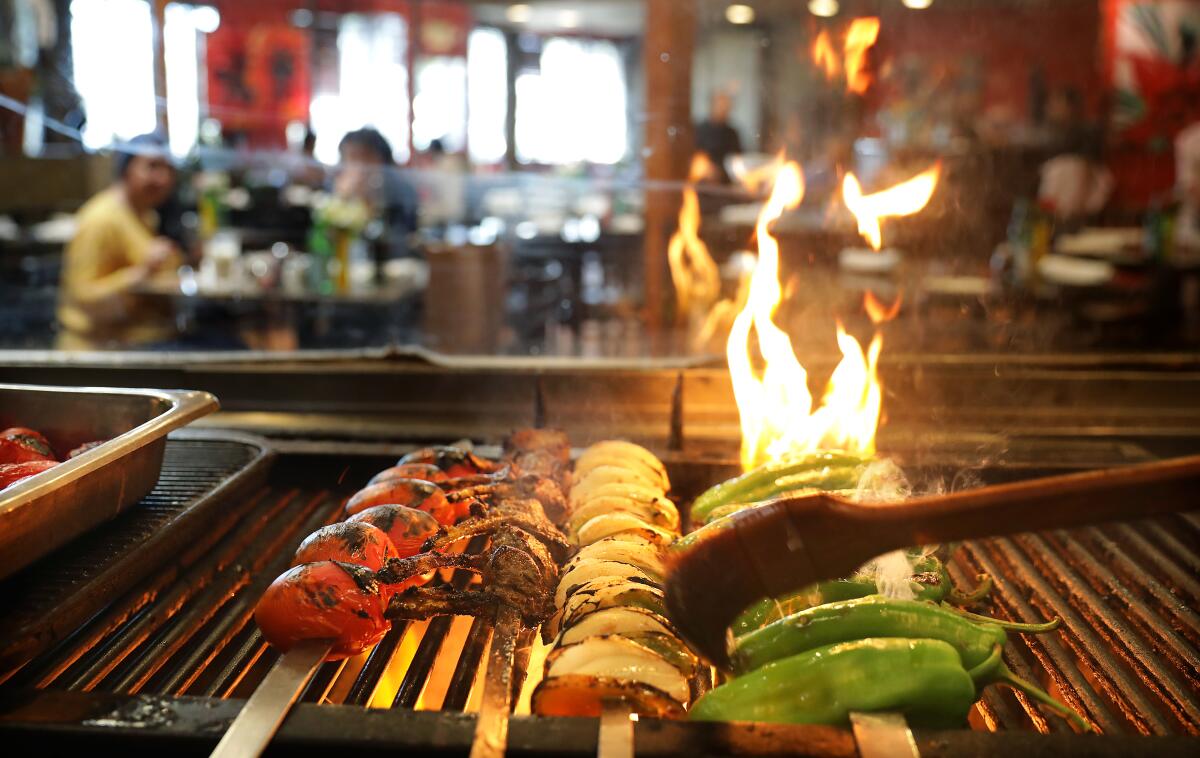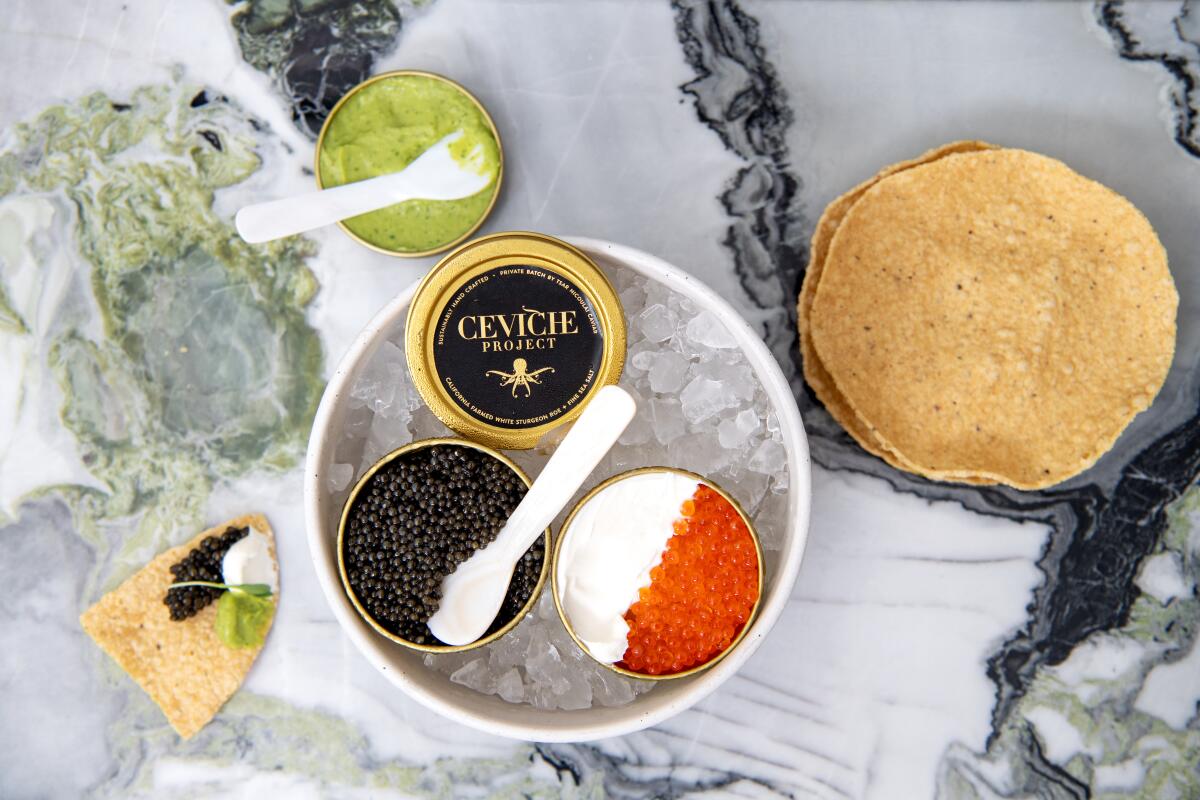Newsletter: Two Iranian American food writers talk Persian restaurant menus and home cooking

- Share via
The world is insanely small.
I’m sitting outside a bakery-cafe in Tallinn, Estonia, called Røst; it makes amazing, elaborately latticed cardamom buns. A couple just sat down next to me. They live in Orange County. The husband, Sol, mentions he is Iranian. I tell him that this week The Times published a story I wrote about eating through Persian restaurants in Southern California with Middle Eastern food expert (and friend) Anissa Helou.
I ask him if he has a favorite Iranian restaurant in Orange County. “Hen House,” he says, “for the dizi.” The dish is named for the traditional vessel used to serve ab-goosht, a lamb and chickpea stew. I’m happy he mentions the place; it was a favorite among the restaurants that Helou and I visited.
One thread I pursued while writing the story was mostly cut for space: Why do the menus at Persian restaurants tend to be focused on kebabs (and their accompanying rice dishes) and only a handful of stews? The Iranian culinary repertoire is incredibly vast; one immersive work on the subject is “Food of Life: Ancient Persian and Modern Iranian Cooking and Ceremonies” by Najmieh Batmanglij.
For insight, I turned to two Iranian American food writers: Bon Appétit senior food editor Andy Baraghani and Naz Deravian, Angeleno and author of the award-winning “Bottom of the Pot” published last year. Both of them graciously shared recommendations with Helou and me during our restaurant tour.
Baraghani was raised in the Bay Area. “Growing up, I was eating Iranian food only at my home or my extended family’s home,” he said. “The soups, the braises, the stews; those are what I think of as the backbone of Iranian food. We didn’t dine out that often, but if we went out for Persian food it was typically a kebab house, whether it was in San Francisco or Los Angeles.
“The khoresh, or stew, is highly seasonal. There are stews made with cardoons and with apples or quinces in the fall, and with peaches in the late summer. The home-cooked dishes have a lot more variation to them than most restaurant dishes; some stews will be made sweeter or more bitter, or richer and fattier, or lighter and leaner. There’s too much room for error for most restaurants to practice these subtleties. It takes time to prep a stew made of fresh artichokes and tons of fresh herbs. Fresh sour cherries, a Persian favorite when in season, need to be pitted. Of course there are short cuts, but the labor of these dishes tends not to work in the restaurant medium.”

Deravian’s family too goes out to Persian restaurants in the Los Angeles area specifically to eat kebabs. “We’re still a fairly young immigrant community — around 40 years — and many of us were forced to relocate in distress,” she said. “The majority of the population came to escape or to set up a better life. They started businesses to make money. Restaurant owners designed their menus for universal appeal.” She notes a certain standardization helps ameliorate expectations. “Everyone will have their own opinions about how a dish should be made, especially if you’re Persian.”
She cites a family variation on gormeh sabzi, a dish that in restaurants often shows up as kidney beans flavored with lamb or beef and simmered with dried lime and herbs. Her mother makes the stew using black-eyed peas; it’s a traditional version in the northern Iranian province of Gilan where Deravian’s mother was raised, though when Deravian has written about the dish she says some readers have responded with skeptical surprise.
Few Persian restaurants across America veer from the kebab-centric model. For divergence, Baraghani points out Sofreh in Brooklyn; Nasim Alikhani opened the restaurant last year; the mains on her menu lean toward stews and dishes such as chicken served in plum and saffron sauce.
Deravian can see the possibility of more innovation on the horizon. “In Los Angeles, many of the Persian restaurants have been open a long time, and kebabs are what people expect. As the diaspora matures, people sometimes want a grab-and-go taste of home. But there is also a community here that wants the rhubarb stew and peach stew, and California is obviously the perfect place to taste the seasons.”
Ultimately, though, Baraghani sums up what both he and Deravian conveyed to me: “If you really want a broad taste of Iranian food, you have to go to a home.”
Ask the critics
What is something most wouldn’t guess is important in your review process?
— @princessemargaret, Instagram
This is a great question I could answer eight different ways. The answer that comes right now is: tablemates who get me and what I do. I rarely go to restaurants alone; the biggest exception is when I’m reviewing an extremely pricey tasting menu where I can arguably have the same experience with or without company. Most of the time, I’m dining with one to three other people. Much of it comes down to practicality: I want to try as many dishes on the menu as possible, and I’m noticing how the restaurant interacts with groups of different sizes.
This is an extremely social job. Restaurant critics play out their lives in restaurants. I cultivate friendships with people who are open-minded in terms of what they’re eating and where they’re eating. I sit on the cusp between introvert and extrovert; I have to bring an almost double state of presence to dinner. There’s the part of me that’s holding up his end of the conversation, and the other part whose radar is noting what’s happening three tables away, and dictating mental notes about the sear on the lamb and the textural play of the deconstructed layer cake. My friends learn to be patient when my mind occasionally disappears into the plates and the action around us; they understand that I’m working. I’m grateful for it.
Top stories

- Guest critic Gustavo Arellano visits Ellie’s in Long Beach, whose global-Italian cooking “comes off like a multicultural update of Evan Kleiman’s late, great Angeli Caffe.”
- I have a review of Ceviche Project in Silver Lake — a restaurant that feels to me like a feel-good pop song of summer 2019.
- Jenn Harris took “The Farewell” director Lulu Wang on an SGV food crawl!
- Also from Jenn: everything you want to know about the glories of sake.
More to Read
Eat your way across L.A.
Get our weekly Tasting Notes newsletter for reviews, news and more.
You may occasionally receive promotional content from the Los Angeles Times.









